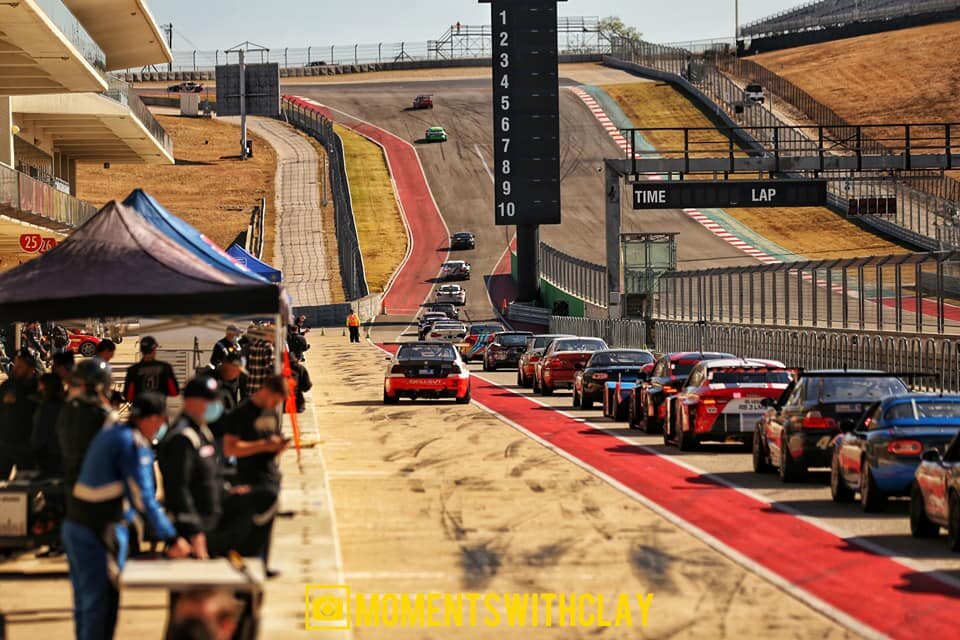
WRL classing
5 ways to play
wrl’s classing aims to equalize vehicle performance to let the drivers and teams do the talking.
general production (GP) classes
General Production (GP) classes are governed by both their power-to-weight ratio as well as a modifier table that balances both the performance gains certain components add, as well as taking cost into account. All GP class cars must be mass-produced and available for sale in North America. Some exceptions may be made for some factory race cars at WRL discretion (Ford Mustang FR500s for example) so long as they are readily available and affordable - but they must take all modifiers over the BASE model of that vehicle. The GP classes represent the home-built, grassroots cars and the ruleset encourages creativity with many ways to build the same car to the competitive end of the class without allowing checkbooks to rule. Want aero for example? You might need to give up some horsepower or add weight. You can find much more information on classing HERE and can find the modifier table in the official WRL rules HERE.
gp1 (general production 1)
GP1 cars represent the fastest of the General Production classes. These cars are governed by a power to weight range of 10.5:0 - 12.799. All GP1 cars follow the GP fuel rule (factory x 1.15) OR 18 gallons, whichever is greater.
Examples of popular GP1 Cars: Nissan 350z, C5 Corvette, E36 M3, Porsche Cayman, BMW E46 M3, Engine swapped Miata, S2000 & many, MANY more!
GP2 (GENERAL PRODUCTION 2)
GP2 cars are a great balance of speed and affordability, their lower weight means great handling too! GP2 is governed by a power-to-weight limit of 12.8:1 - 15.099:1. Fuel in GP2 is lmited to 115% of factory capacity or 16.5 gallons, whichever is greater.
A few examples of GP2 cars are: TCA spec cars, Spec E46, BMW E36, Mazda NC MX-5, 2005+ Ford Mustang V6, Porsche Boxster, Lexus SC300 & many, MANY more!
GP3 (GENERAL PRODUCTION 3)
GP3 cars might represent the highest end of the PWR scale, but the racing is amazing and participation level is high! GP3 has represented as our second largest class at multiple events in 2021 and we expect it to continue in its growth! GP3 is governed by a power-to-weight limit of 15.1:1 - 18.0:1. GP3 fuel is limited to 115% of factory fuel capacity or 15 gallons, whichever is greater.
A few examples of GP3 cars are: Mazda MX-5/Miata (all), Porsche Boxster, BMW E36 325i/328i, Lexus is300, Porsche 944, E30 & many, MANY more!
Grand touring (GT) classes
Grand Touring or GT represents the fastest category in WRL. GT cars do not take any modifiers from the modifier table except the flat power curve modifier (applicable to all classes) and the Lexan/plexiglass side window modifier (see rules for more information). This is a great example of where a concise rulebook can be the best rulebook - the very simple PWR limit combined with our sophisticated fuel formula has made this one of the most consistently competitive categories to date. The GT category accepts factory built and tube framed cars with some limitations. Contact race@racewrl.com for eligibility of your racecar.
gto (grand touring open)
Grand touring open represents the lowest PWR class in WRL (fastest). GTO is governed by a power-to-weight window of 18.0:1 - 9.0:1 GTO observes the WRL GTO fuel formula which can be found in the WRL rulebook HERE. This class has become a fantastic place to race previous generation pro-series cars against some of the fastest home-built endurance race cars in the country.
A few examples of GTO cars include: GT4 homologation, TCR homologation, PWC, V8 or V6 swapped MX-5/Miata, BMW E46 M3, 981/987 Cayman S, 996 Porsche 911, Late model stock cars, some TA category cars & many, MANY more!
gtU (grand touring UNDER)
Grand touring under (GTU) is comprised of cars that are similar to GTO cars but weigh less than 2400lbs. Cars in this category run at 9.0:1 PWR and are NOT affected by PWR modifiers. This class was born from the demand for lightweight sports prototype racing in the US, but engine swapped Miatas have already proven that this can be a builders class for lightweight production cars. GTU cars are governed by the same base ruleset that GTO is.
A few examples of GTU cars include: Sebeco NP01, Engine Swap Miata, Lotus, etc.





